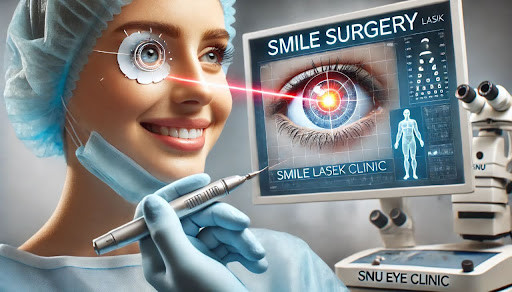In today’s fast-paced world, more people are seeking permanent solutions to correct their vision and reduce their dependence prk on glasses or contact lenses. Among the most trusted and widely performed procedures for vision correction are LASIK and PRK. These laser eye surgeries offer safe, long-term solutions for individuals with nearsightedness, farsightedness, and astigmatism. Though similar in many ways, LASIK and PRK have key differences that make each suitable for different needs and lifestyles.
This article provides a comprehensive overview of both procedures, their benefits, safety profiles, and how to decide which one might be right for you.

Understanding LASIK and PRK
LASIK (Laser-Assisted In Situ Keratomileusis)
LASIK is the most popular form of laser eye surgery. It involves creating a thin flap on the cornea using either a microkeratome blade or a femtosecond laser. Once the flap is lifted, an excimer laser reshapes the underlying corneal tissue to correct refractive errors. The flap is then repositioned to heal naturally without stitches.
PRK (Photorefractive Keratectomy)
PRK was the first FDA-approved laser eye surgery and is still widely used today. Instead of creating a corneal flap, the surgeon removes the thin outer layer of the cornea (the epithelium), which regenerates after surgery. The underlying cornea is then reshaped with a laser to improve focus.
Both LASIK and PRK aim to provide clearer vision by correcting the way light is bent (refracted) onto the retina.
Benefits of LASIK and PRK
Both LASIK and PRK offer significant, life-changing advantages:
1. Glasses-Free Living
For most patients, these procedures result in 20/20 vision or better. Many individuals no longer need glasses or contact lenses for daily activities, improving their convenience and self-confidence.
2. Quick Procedures
Both surgeries take only 10–15 minutes per eye and are performed on an outpatient basis. You’ll be awake during the procedure, but numbing eye drops ensure a painless experience.
3. Long-Lasting Results
Once the eyes are healed, the results are typically stable for many years. While age-related vision changes may still occur later in life (such as presbyopia), most patients enjoy lasting freedom from corrective eyewear.
4. High Success Rates
LASIK and PRK have excellent success rates. According to the American Refractive Surgery Council, over 96% of patients are satisfied with their vision after LASIK, and PRK delivers similarly positive outcomes, particularly for people with thinner corneas or other LASIK disqualifiers.
Safety and Risks
Both LASIK and PRK are considered safe when performed by qualified surgeons. Still, like any surgical procedure, they carry potential risks.
LASIK Risks:
- Flap complications: Since LASIK involves creating a flap in the cornea, there’s a slight risk of flap dislocation or incomplete healing, especially in cases of eye trauma.
- Dry eyes: Some patients experience dryness in the months following surgery.
- Night vision issues: Glare or halos around lights at night can occur, though these usually fade with time.
PRK Risks:
- Longer healing time: Since the epithelium must regenerate, PRK recovery can take longer, with full visual clarity developing over days or even weeks.
- Discomfort: Post-surgery discomfort is more pronounced than with LASIK but manageable with medicated drops and oral pain relievers.
- Haze or delayed vision clarity: Rarely, patients may experience temporary haze during healing, which is usually treatable.
Despite these risks, serious complications from either procedure are very rare, especially when performed by experienced surgeons using advanced technology.
Who Is a Good Candidate?
While both LASIK and PRK can correct the same range of vision issues, your eye anatomy and lifestyle will help determine the most suitable procedure.
You may be a candidate for LASIK if:
- You have a stable vision prescription
- Your corneas are thick enough to support the creation of a flap
- You don’t have chronic dry eye or other corneal diseases
- You’re not involved in high-impact activities that risk eye injury
You may be a better fit for PRK if:
- You have thinner corneas or irregular corneal shape
- You’re prone to dry eye or have a history of contact lens intolerance
- You participate in contact sports or military service
- You’re not eligible for LASIK due to medical reasons
A comprehensive eye exam and consultation are necessary to determine your best option.
Recovery and Aftercare
LASIK Recovery:
- Most patients experience improved vision within 24 hours.
- You can typically return to work and light activities within 1–2 days.
- Avoid eye rubbing, swimming, and strenuous exercise for at least a week.
PRK Recovery:
- Vision improves gradually over 3–7 days, with full clarity taking several weeks.
- You may need a bandage contact lens for the first few days.
- Light sensitivity and discomfort are common during initial healing.
Both procedures require follow-up appointments and strict adherence to aftercare instructions to ensure optimal results.
Conclusion
LASIK and PRK are both safe, effective methods for achieving glasses-free vision. LASIK offers a quicker recovery and minimal discomfort, while PRK is ideal for those with thin corneas or active lifestyles where eye trauma is a concern.
Choosing the right procedure ultimately depends on your individual eye health, career, and lifestyle. By consulting with a board-certified ophthalmologist and understanding the advantages and trade-offs of each option, you can confidently move toward clearer vision—and greater freedom.

